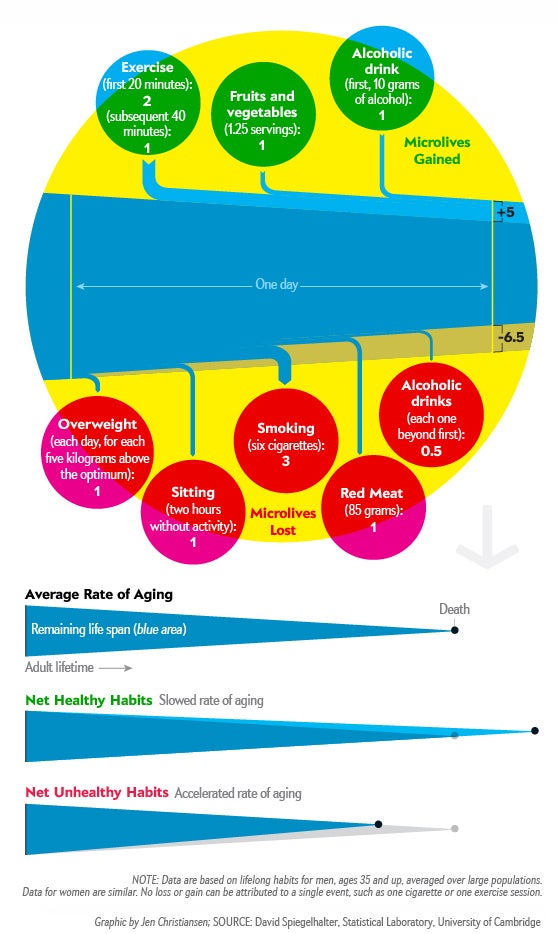We all know that smoking is bad for our health and that eating vegetables is good for it. Yet how bad and how good are they? Without a clear notion of threat and reward, it is that much harder to avoid a cigarette or to choke down a serving of broccoli. “I hate when someone tells me that something is risky,” says David Spiegelhalter, a professor of risk assessment at the University of Cambridge. “Well, compared to what?”
To answer his own question, Spiegelhalter converted reams of statistical risk tables into a simple metric: a microlife—30 minutes. If you smoke two cigarettes, you lose 30 minutes of your life (top graphic). Exercise for 20 minutes, and you gain two units of microlife. Over time bad habits accelerate your aging, and good habits slow it down (bottom graphic). “That seems to resonate with people,” Spiegelhalter says. “No one likes to get older faster.”

On supporting science journalism
If you're enjoying this article, consider supporting our award-winning journalism by subscribing. By purchasing a subscription you are helping to ensure the future of impactful stories about the discoveries and ideas shaping our world today.
SCIENTIFIC AMERICAN ONLINE
For a video about your risk of immediate death, see ScientificAmerican.com/jan2013/graphic-science